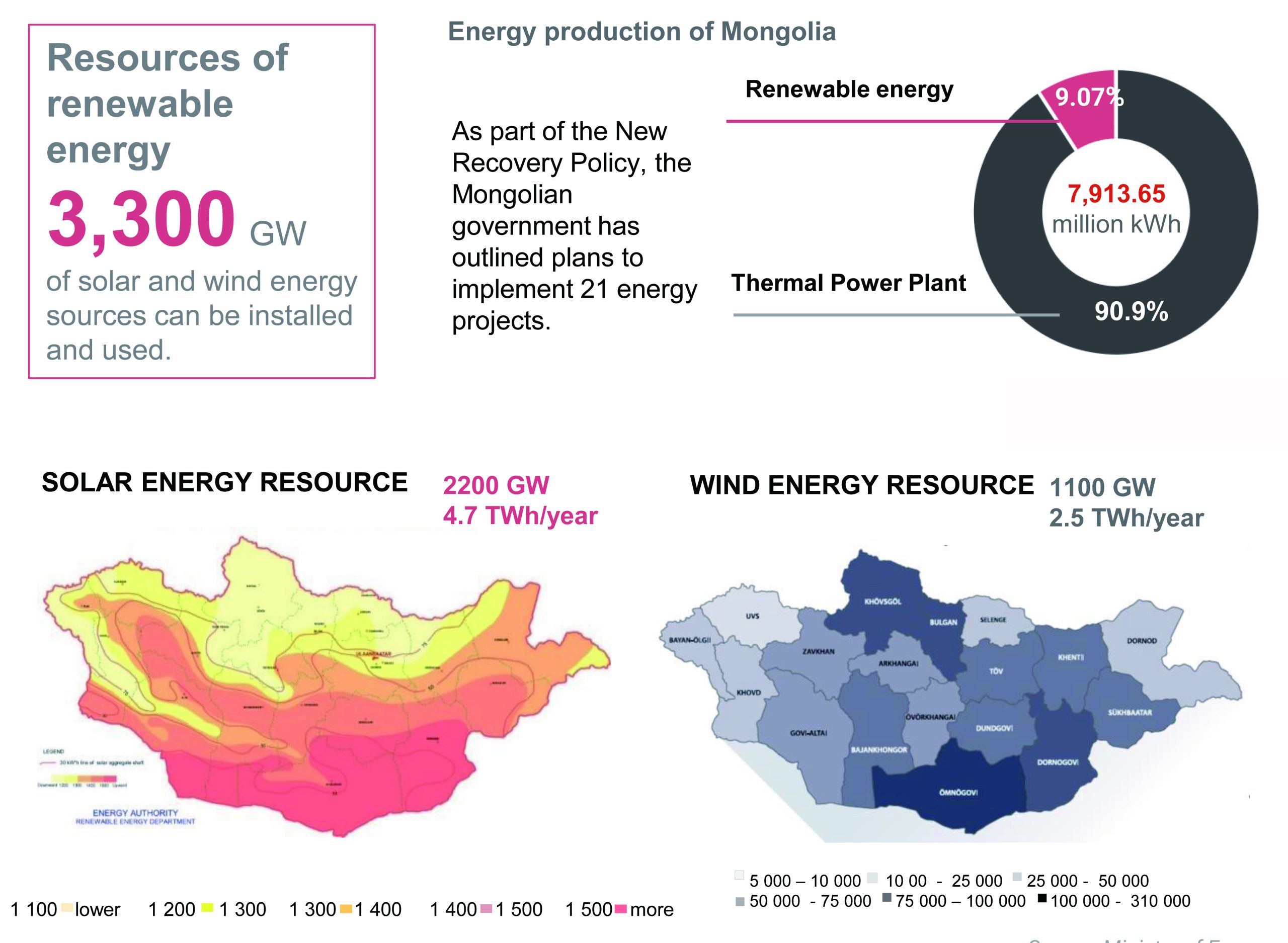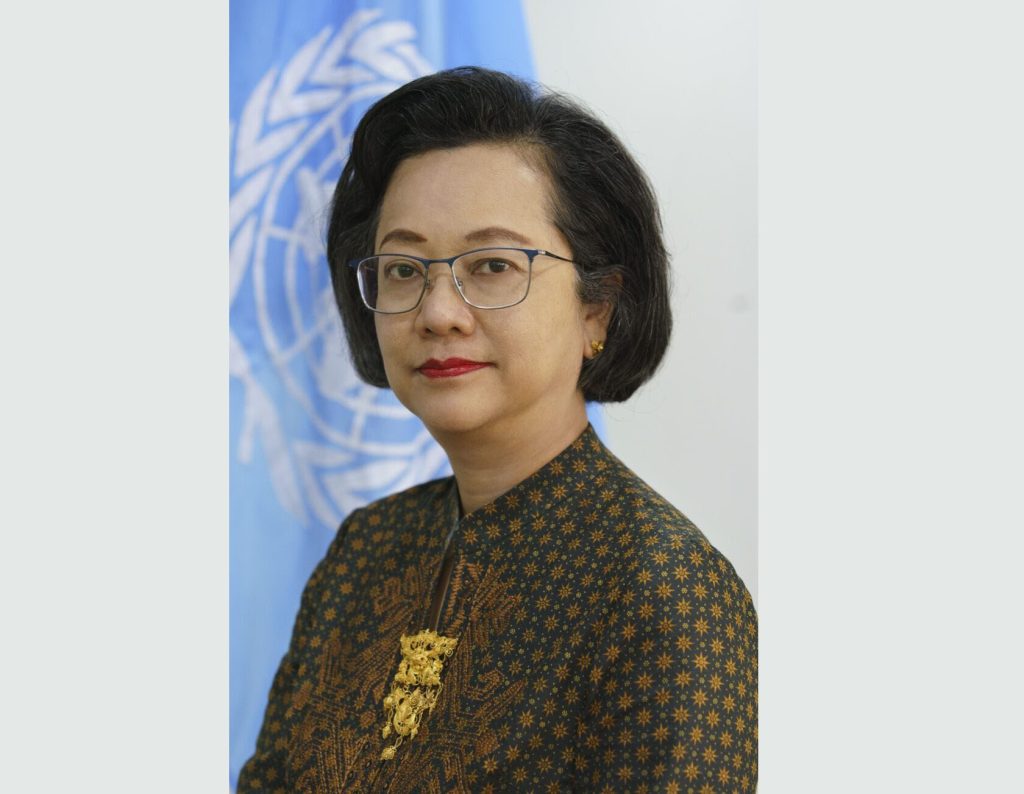Quick facts
Renewable energy
Mongolia has abundant renewable energy potential, especially solar and wind power. Addressing national energy security, the Vision-2050 aims to become self-sufficient in energy production in the first stage, reduce coal-sourced energy, and in the second stage to become an exporter of energy. One of the ways to fulfill this goal is the development of the renewable energy sector. In order to support economic growth, effectively implement the long-term development policy of Mongolia Vision-2050, and improve the productivity of the government. Furthermore, as per the New Recovery Policy, Mongolia aims to develop renewable energy in an appropriate ratio, build hydropower and storage stations, and ensure the reliability and stability of the integrated energy system. In Mongolia, the installed capacity of renewable energy production reached 286 MW, accounting for 18.1 percent of the total installed capacity and 9.2 percent of production. Due to the difference in tariffs, 27 percent of the total sales revenue is allocated to these sources.
Renewable energy sector opportunities:

Legal Framework
The Law on Renewable Energy dated 11 January 2007 sets the legal basis for use of renewable energy facilities, production and transmission, rights and obligation of renewable energy license holders and tariffs. Under the Renewable Energy Law, the energy sector’s central administrative organisation is the Ministry of Energy which is mainly responsible for developing and implementing government policy on renewable energy. The Energy Regulatory Commission (ERC) is also responsible for setting tariffs for electricity, issuing a license for some type of activities, and approve the contract template connected to the transmission network, and to monitor the implementation of the contract. Furthermore, the Energy Law dated 1 February 2001 is one of the main laws regulating the energy sector and details all types of energy licenses such as energy generation, transition, distribution, construction of energy facilities and so on.
Licensing requirements
According to the Energy Law, most of the activities relating energy sector are subject to relevant licenses. The ERC is the main regulatory body oversees licensing and monitors performance of license holders in accordance with the applicable laws.

Feed in tariffs
Renewable Energy Law provides the feed-in tariff scheme which ranges for on-grid installations as follows:
❑ Wind: up to USD 0.085/kWh,
❑ Solar: up to USD 0.12/kWh, and
❑ Hydropower up to 5 MW: USD 0.045-0.06/kWh.


